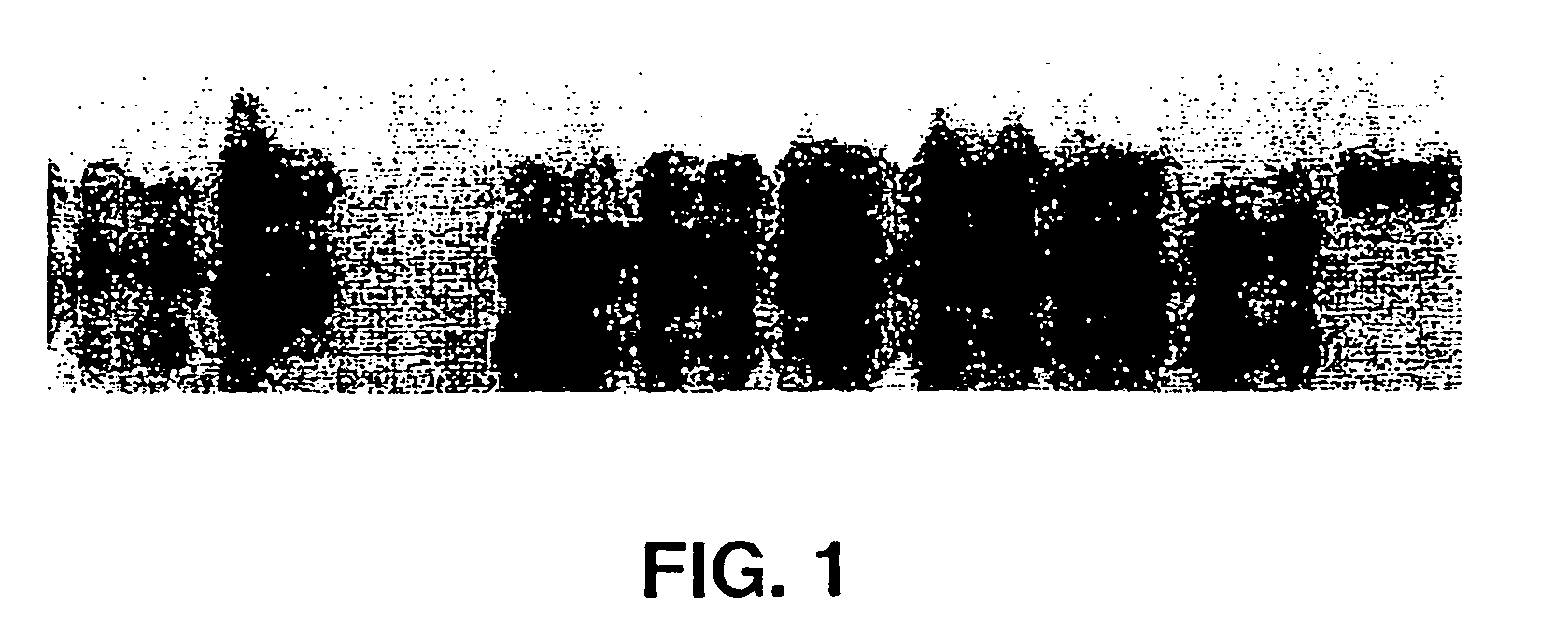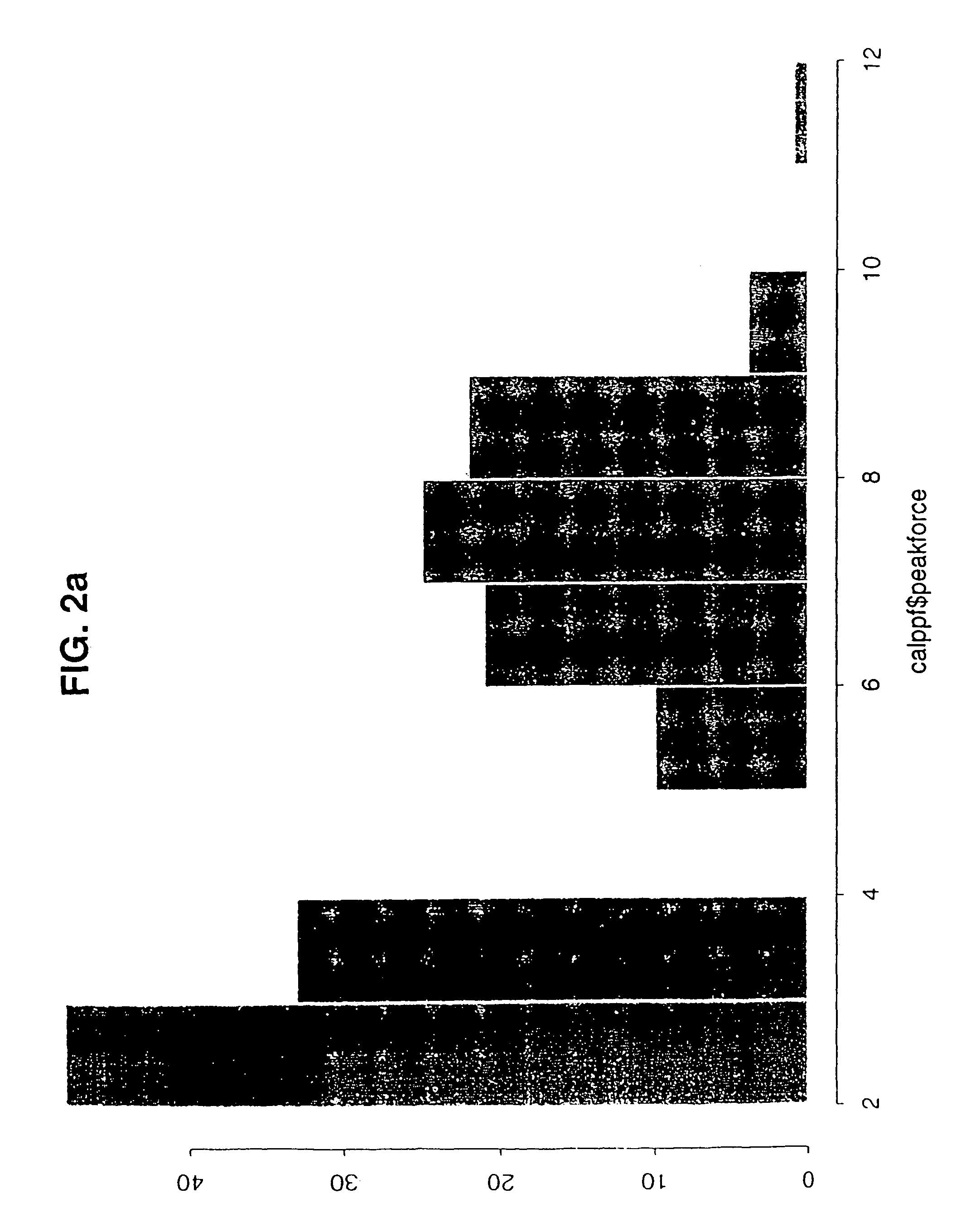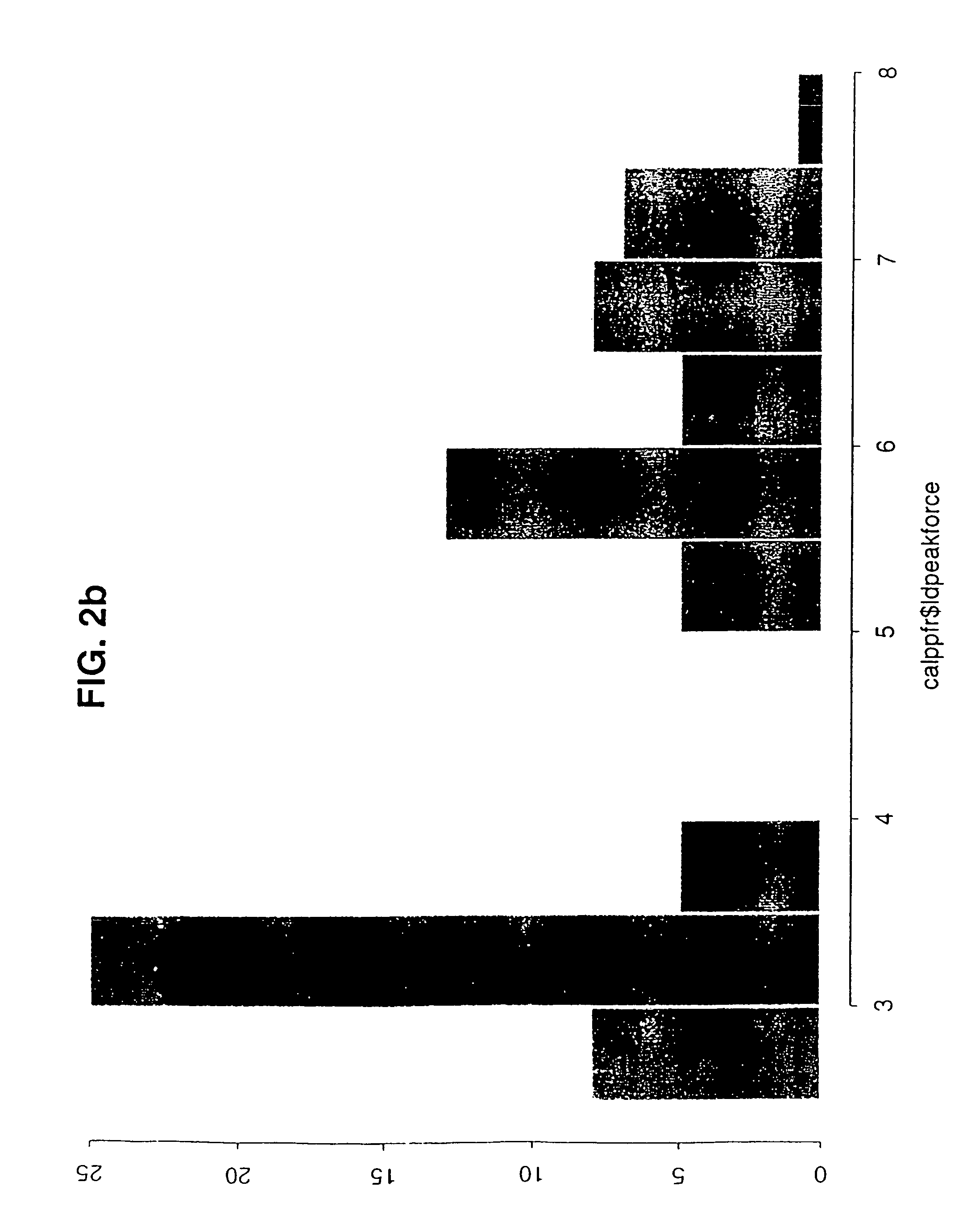DNA markers for meat tenderness
a technology of genetic markers and meat tenderness, applied in the field of genetic markers for meat tenderness in animals, can solve the problems of unfavorable prediction of calpastatin activity, no clear link between cast gene and meat tenderness, and insufficient use of pcr single-strand conformation polymorphism analysis of calpastatin gene for calpastatin activity prediction, etc., to reduce the influence of fixed genetic and environmental effects
- Summary
- Abstract
- Description
- Claims
- Application Information
AI Technical Summary
Benefits of technology
Problems solved by technology
Method used
Image
Examples
example 1
Identification of CAST3 D / E Polymorphism
[0064]Cattle were chosen from the DNA Bank of the Cattle and Beef Cooperative Research Centre located in Brisbane, Australia to have as diverse a genetic and phenotypic background as possible. Information stored in the CRC Database was used to select animals. Animals of extremes of peak-force were selected, although animals with peak-force measures above 12 were excluded since they might have confounded peak-force measurements. In essence, the procedure was to select cattle in each contemporary group which were of phenotypic extreme measures, to ensure that no sire was represented by a cluster of offspring, that all markets and finishing regimes were included in each extreme, so that extremes were not biased by being representative of a particular market or finishing regime. A total of 169 samples were obtained (Table 1) for the first sample. A second sample of 77 animals (Table 6) were analysed as a check to determine whether the same allelic...
example 2
Analysis of CAST3 D / E Polymorphism
[0069]There are two common alleles (FIG. 1) and at least one rare allele for the CAST D / E polymorphism and both the common alleles are found in all the breeds, although there are clear differences in genotype frequency within the breeds. Zebu breeds have a greater frequency of the ‘11’ genotype (Tables 2 and 7) than taurine breeds in this sample.
[0070]The raw values (FIGS. 2a&2b) were then plotted against the CAST genotypes (FIGS. 3a&3b) and these associations are sufficiently strong to show visual associations between peak-force and genotype. The most important genetic effect considered in the literature for CAST, breed or taurine versus zebu, has been carefully matched so that there are animals of high and of low peak-force from each breed in the sample, and breed is not expected to be an explanatory variable here.
[0071]The analysis (Table 3) of the CAST genotypes shows strong, confirmatory evidence of effects of the CAST gene or sequences near th...
example 3
Identification of CAST5 Microstatellite Polymorphism
[0079]To determine whether other polymorphisms in the CAST gene are associated with tenderness, both of the cattle samples (Tables 1 & 6) were genotyped with the CAST5 microsatellite polymorphism (Nonneman et al, 1999) which was developed from DNA sequence reported earlier (Cong et al., 1998).
[0080]The primer sequences to amplify this polymorphism are
[0081]
CAST5U1:5′-GTAAAGCCGCACAAAACACACCCAGG-3′ and(SEQ ID NO:7)CAST5D1:5′-GTTTCTGGACCCTCTGGATGAGGAAGCGG-3′(SEQ ID NO:8)
with amplification fragments in the range 130- 159 bp, sizes determined on an ABI 373 DNA sequencer. Alleles and genotypes were assigned based on these size fragments leading to 13 alleles and the distribution of allele sizes is shown in FIG. 5.
[0082]Two different sets of analyses were performed. In the first, the genotypes at the CAST3 D / E polymorphism were compared to the CAST5 microsatellite to determine whether there were significant associations between the genoty...
PUM
| Property | Measurement | Unit |
|---|---|---|
| Fraction | aaaaa | aaaaa |
| Fraction | aaaaa | aaaaa |
| Fraction | aaaaa | aaaaa |
Abstract
Description
Claims
Application Information
 Login to View More
Login to View More - R&D
- Intellectual Property
- Life Sciences
- Materials
- Tech Scout
- Unparalleled Data Quality
- Higher Quality Content
- 60% Fewer Hallucinations
Browse by: Latest US Patents, China's latest patents, Technical Efficacy Thesaurus, Application Domain, Technology Topic, Popular Technical Reports.
© 2025 PatSnap. All rights reserved.Legal|Privacy policy|Modern Slavery Act Transparency Statement|Sitemap|About US| Contact US: help@patsnap.com



